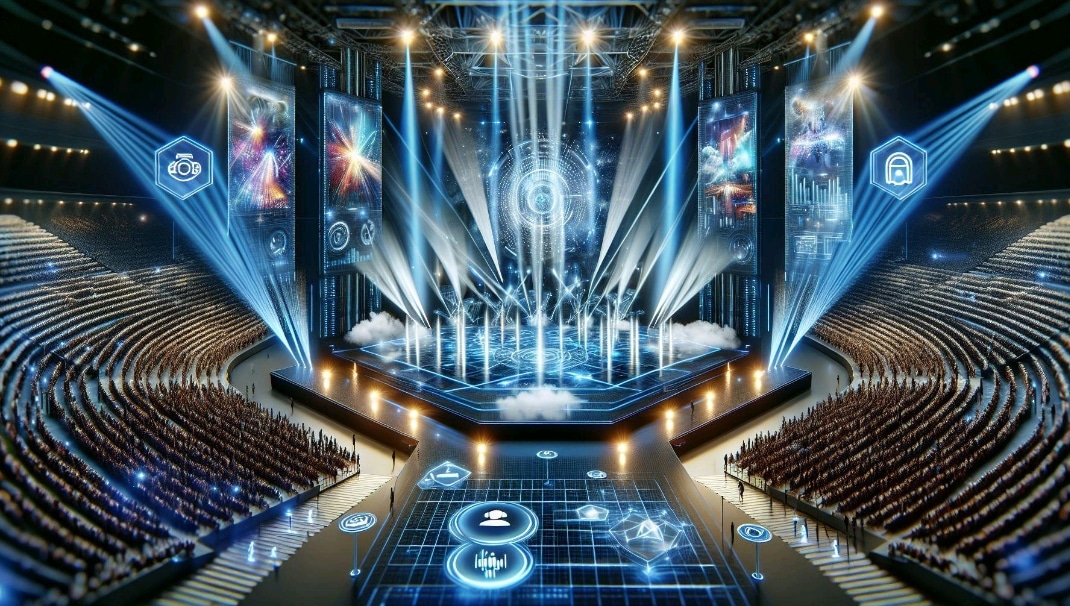The rise of virtual concerts reshaping live music

Virtual concerts have emerged as a significant trend in the entertainment industry, transforming how audiences experience live music.
The concept of virtual concerts isn’t entirely new; it has roots in early internet broadcasts and virtual worlds like Second Life, where artists experimented with performing in digital spaces.

However, the COVID-19 pandemic acted as a catalyst, accelerating the adoption and popularity of virtual concerts due to restrictions on physical gatherings.
Technological advancements have played a crucial role in this evolution. High-speed internet, advanced graphics, and sophisticated streaming platforms have made it possible to create immersive and interactive concert experiences.
Artists can now perform live from their studios, with audiences tuning in from around the globe.
The convenience and accessibility of these concerts have contributed to their growing popularity.
Virtual concerts offer unique advantages. They eliminate geographical barriers, allowing fans from different parts of the world to attend the same event.
They also provide a safer alternative during times of public health crises.
Moreover, the integration of interactive features—such as live chats, virtual meet-and-greets, and customizable avatars—enhances the overall experience, making it more engaging for the audience.
Casinos.com has been a valuable resource for understanding the broader digital transformations in entertainment. The website offers insights into how the entertainment industry is leveraging technology to create new experiences for users.
Just as online casinos have revolutionized gambling, virtual concerts are reshaping the music industry by offering innovative ways for artists and fans to connect.
As we look ahead, it’s worth considering whether virtual concerts will continue to thrive in a post-pandemic world. Will they become a permanent fixture in the music industry, or will they fade away as live events return?
Whatever the future holds, it’s clear that virtual concerts have already left a lasting impact on how we experience live music.
Technological innovations driving virtual concerts
The rise of virtual concerts would not be possible without several key technological innovations.
Virtual reality (VR) and augmented reality (AR) are at the forefront, offering immersive experiences that go beyond traditional live streams.
VR headsets transport users into a 360-degree concert environment, allowing them to feel as if they are standing right in front of the stage. AR, on the other hand, overlays digital elements onto the real world, enhancing the concert experience with interactive visuals.
Live streaming platforms have also evolved significantly. Services like YouTube, Twitch, and specialized platforms like Wave and MelodyVR have become essential for hosting virtual concerts.
These platforms provide high-quality video and audio streaming, ensuring that audiences can enjoy a seamless experience.
Additionally, they offer features like real-time chat, virtual tipping, and merchandise sales, creating new revenue streams for artists.
High-speed internet is another critical factor. The widespread availability of broadband and 5G networks has made it possible to stream high-definition content without buffering issues.
This is crucial for maintaining the quality of virtual concerts, as any lag or interruption can detract from the experience.
Advanced graphics and animation technologies have also played a role. Artists and event organizers can create stunning visual effects, virtual stages, and even digital avatars.
These elements add a layer of creativity and innovation to virtual concerts, making them visually captivating.
Moreover, the use of artificial intelligence (AI) and machine learning is enhancing audience engagement.
AI algorithms can analyze viewer data to personalize the concert experience, recommending songs, creating custom playlists, and even generating real-time visual effects based on audience reactions.
These technological innovations are not just enhancing the quality of virtual concerts; they are also expanding the possibilities for what a concert can be.
As technology continues to advance, we can expect even more sophisticated and immersive virtual concert experiences in the future.
The economic impact of virtual concerts
Virtual concerts have had a significant economic impact on the music industry. For artists, they offer a new revenue stream that can be particularly valuable during times when traditional touring is not possible.
Revenue can be generated through ticket sales, virtual meet-and-greets, merchandise, and even virtual tipping. Some artists have reported substantial earnings from virtual concerts, sometimes rivaling the income from physical tours.
Event organizers also benefit from cost savings. Virtual concerts eliminate many of the logistical expenses associated with physical events, such as venue rental, travel, and accommodation.
This reduction in costs can make it easier for smaller artists and independent organizers to host concerts, democratizing access to live performance opportunities.
The broader music industry is also seeing shifts. Record labels, management companies, and other stakeholders are exploring new business models centered around virtual concerts.
For instance, some labels are investing in virtual concert platforms or partnering with tech companies to develop proprietary streaming solutions.
However, the shift to virtual concerts is not without challenges. The initial investment in technology and equipment can be significant, and not all artists have the resources to make this transition.
Additionally, there are concerns about digital piracy and unauthorized recordings, which can impact revenue.
Despite these challenges, the economic potential of virtual concerts is undeniable.
As the technology continues to improve and audiences become more accustomed to digital experiences, virtual concerts are likely to become a staple in the music industry’s economic landscape.





